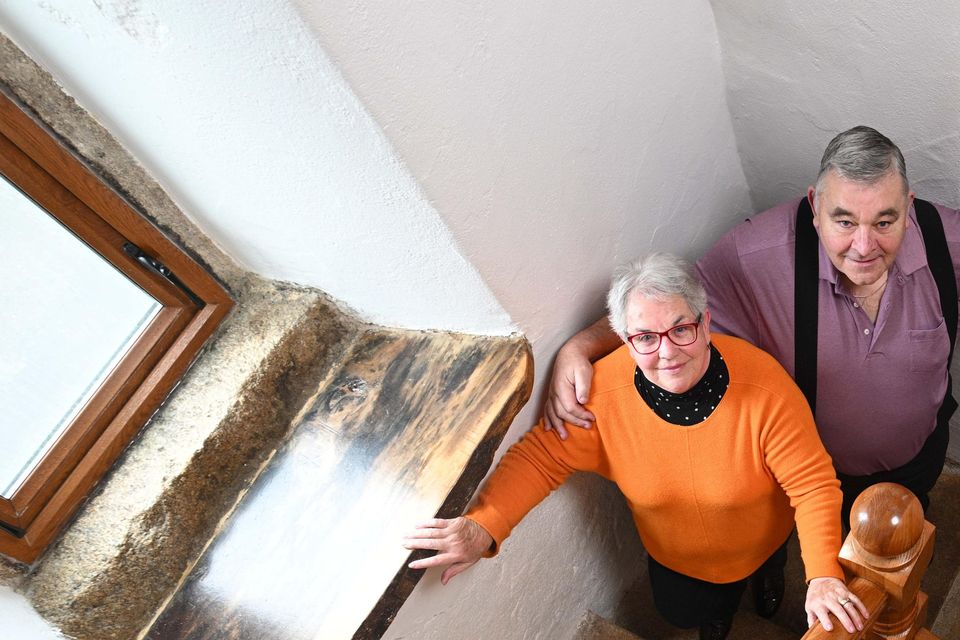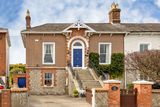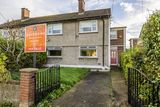This former RIC barracks survived War of Independence carnage to become a unique family home
Owners of The Tower House embarked on a painstaking renovation job to showcase the property’s historic features
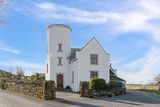

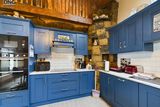
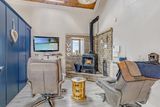
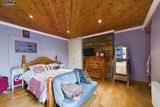
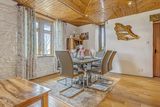
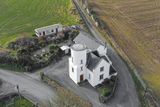
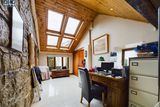
The Tower House, Ballinree, Borris, Co Carlow
Asking price: €395,000
Agent: DNG McCormack (059) 913 3800
“Sinn Féin can do very much as it likes in Carlow!” Thus declared the frustrated Royal Irish Constabulary during the War of Independence after the local IRA pioneered a new method of warfare that would be copied nationwide and soon have the country ablaze.
Carlow RIC barracks were being burned down at the rate of one every week at one stage, with tragic consequences for the people at the centre of the carnage near Ballymurphy, where the county suffered its worst ‘bloodbath’ of the war in a brutal response, according to local historian Dr Shay Kinsella.
At the centre, and quite literally part of all of this history, stands one of the most interesting properties now on the market in Carlow.
Owners Eamonn and Mary Quirke in the staircase of The Tower House. Photo: Bryan Meade
The Tower House, a former barracks located a few miles from Ballymurphy and several other burned RIC stations, somehow escaped the carnage erupting all around it.
This building comprises a tower, the original station building and a large single-storey extension that has been extensively renovated by vendor Eamonn Quirke and his family.
They found plenty to remind them of the property’s colourful past during the process.
The modern kitchen
“There was a ‘lock-up’ room with holes above and below the windows where the bars slotted in. They’d pour molten lead in too so there’d be no chance of escaping,” says Eamonn.
While pondering their miserable fate, the station’s inmates probably didn’t appreciate the building’s immensely thick walls and other extraordinary features, such as the tower with an almost-medieval-looking cut stone staircase.
But the Quirkes made the most of them in a painstaking renovation that showcases its historic features while complementing them with natural materials.
The sitting room with exposed brickwork
“It was a listed building, so we had to be careful,” says Eamonn. “It took us a year between everything and ended up costing as much as a new house.”
There were plenty of challenges along the way. The building’s mighty rafters needed lots of work and his original idea of stripping back the facade to its cut-stone wall didn’t quite work out as planned.
Read more
“We would’ve stripped the stone outside (as well as inside), but whatever sort of plaster they used was extra sticky and you’d damage the stone by trying to strip it off,” he says.
Instead, the building has a white-painted plastered finish offset with granite window surrounds.
One of the bedrooms
The staircase in the tower is stripped back to show how huge blocks of stone were cut in wedges and stacked in a medieval-like ‘spindle’ that forms its spine.
At 1,636 sq ft, The Tower House is bigger than its “three-bedroomed” tag suggests and includes a loft, family room, entrance hall, sitting room, living room and four bathrooms.
Any suggestion of gaol-like confinement is dispelled in a spacious modern kitchen/dining area with a marble-topped island.
Outside, a feature-filled garden continues the stone-walled theme, with plenty of granite, cut-stone walls and a limestone patio.
The dining room
It can be extended up to an acre if the buyer wishes to do a deal with the vendor, who owns the surrounding lands.
There are views of the surrounding countryside from the upper floor of the tower, as you’d expect from a military observation point, and rifle-slits still serve as some of the windows.
So how did The Tower House escape the fate of so many RIC barracks razed all over the county, including two literally a few miles up and down the road?
Simple: it ended up on the right side of history and was probably the only RIC station to be raided by the Black and Tans.
An aerial view of the property
“It was decommissioned around 1900 [and occupied by locals],” says Eamonn. “ The Tans actually even searched Tower House looking for guns and ammunition.”
One of their local ‘rampages’ occurred after the county’s bloodiest encounter in the war when crown forces surprised the local IRA during a training session a few miles away in Ballymurphy.
The ‘flying column’ of nine men had their rifles gleaming and ready for inspection, but unfortunately they had only 20 bullets between them when surprised by two lorryloads of soldiers and armed police.
The home office
After shooting a few rounds, they fled the scene under a hail of fire, which subsequently killed one IRA man, a local farmer and two brothers.
Eamonn’s family are grown up and the house is getting a bit too big now.
“There’s only two of us living here now. It’s very nice as it is, but someone else might want to take it to another level,” he says.
DNG McCormack seeks €395,000.
Join the Irish Independent WhatsApp channel
Stay up to date with all the latest news

